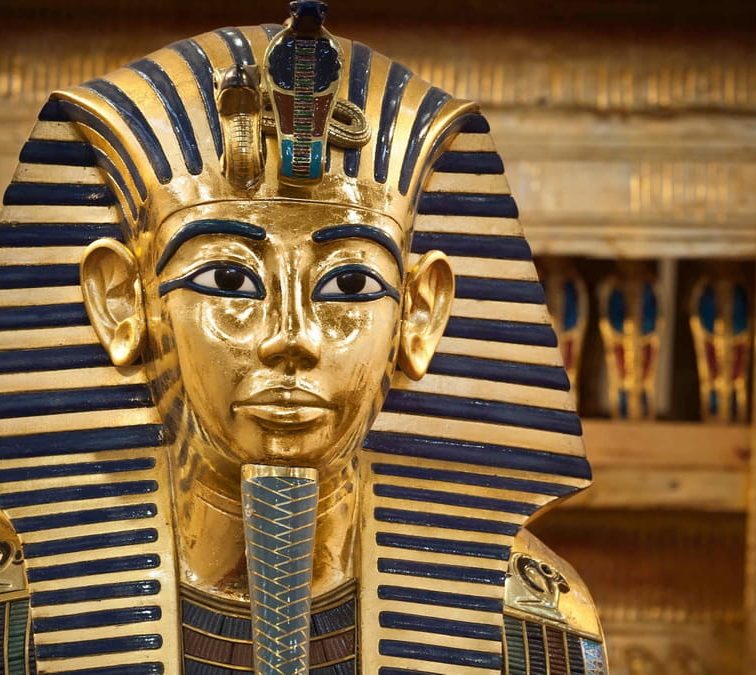Hop onto our time-traveling camel and journey back thousands of years – no DeLorean required! Ready to unwrap some fun facts about ancient Egypt? From scented fat perfumes (no kidding!) to mummification practices that will have you shaking your head, we’ve compiled a list that’s as quirky as it is true.
Think you know all about the pyramids and pharaohs? Think again! As we unveil each of these ancient Egypt fun facts, you’ll discover that the land of the Nile River and papyrus had more than just sand and sunshine. Whether you’re a history buff or just looking for a good chuckle, this list of the 30 most interesting and hilarious tidbits from the land of hieroglyphs and scarab beetles will keep you entertained. Strap in, and let’s dive deep into a past that’s anything but dry and dusty!
1. Cats Were Royal!
The love for cats today? Pales in comparison to how ancient Egyptians revered these furballs. They weren’t just household pets, they were practically divinity on four legs. The goddess Bastet, often depicted as a lioness or a woman with a lion’s head, was the deity of home, fertility, and protector of Pharaoh. Cats were seen as her physical embodiments.
Imagine having a deity sleeping at the foot of your bed and knocking over your papyrus scrolls! Killing one, intentionally or otherwise, could lead to a severe punishment. In fact, when a cat died, families went into mourning, shaving their eyebrows off. So the next time your cat acts like it rules the house, remember, it’s in its genes!
2. Pharaoh’s Rat Tail
Hair fashion trends might seem crazy now, but ancient Egypt fun facts prove that they had their own wild style! Pharaohs rocking false beards or “postiches” wasn’t just a fashion choice; it symbolized their god-like status and connection to deities like Osiris who also sported these beards.
But wait, there’s more hair-raising fun! Royal kids weren’t left out; they sported a unique ‘do, the side-lock hairstyle. Imagine a shaved head with a solo rat-tail-like lock dangling on the side. It’s like punk met royalty, and we can’t help but wonder if it ever got caught in their royal jewelry.
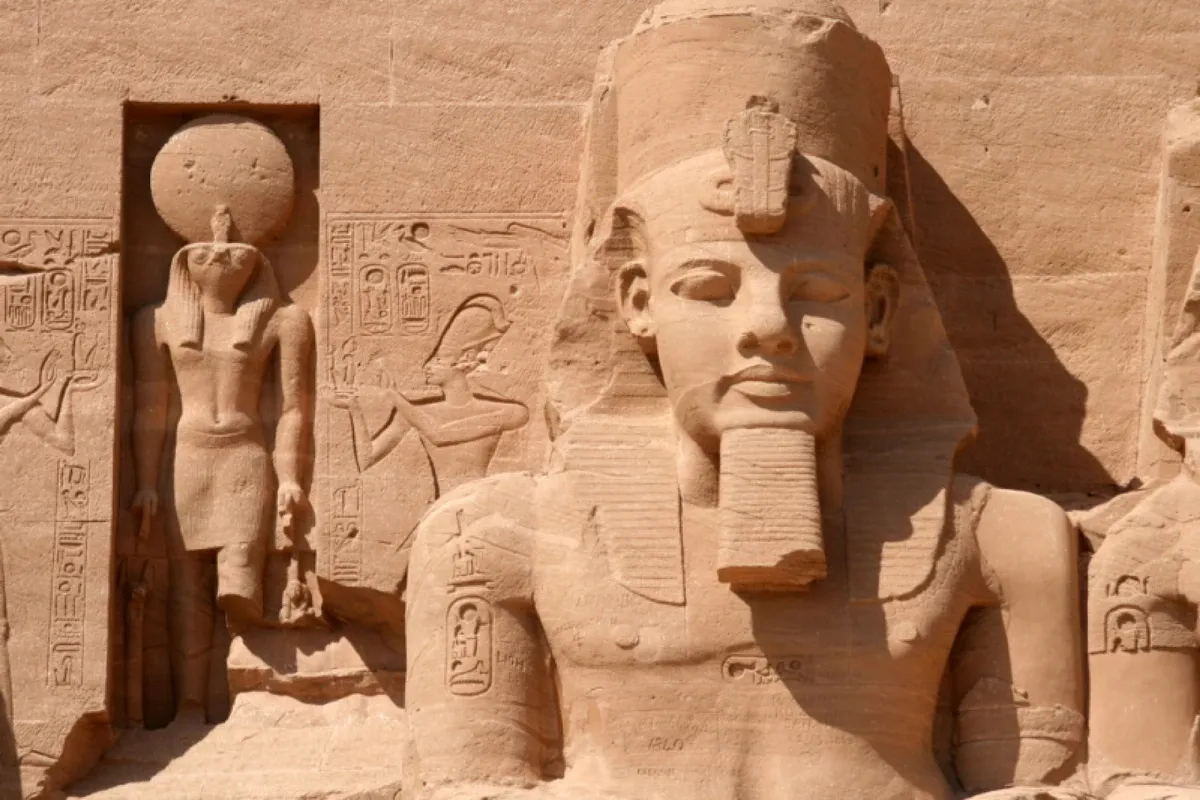
3. Hippos Were Not Friends
Hippos: cute, chubby, and… terrifying? Today’s squishy stuffed animal was yesterday’s monster. In the times of ancient Egypt, these creatures weren’t cuddled; they were feared. They were known to capsize boats, attack villagers, and destroy crops. Talk about having some serious anger issues!
Ancient Egyptians respected and feared them so much they even had a deity, Taweret, depicted as a pregnant hippo, who was ironically the goddess of childbirth and fertility. It’s funny how a creature can be a symbol of both life and potential death.
4. Mummy Beauty Products
Mummification in ancient Egypt wasn’t just about wrapping and preserving. No siree! There’s a fun, fragrant twist. The same resin, called “cedria,” used to ensure mummies stayed, well, mummy-like for millennia, was also a vital ingredient in Egyptian perfumes.
Imagine wearing a scent that says, “I smell divine, and also, I’m ready for the afterlife!” While it might not be everyone’s go-to fragrance note today, back then, it was a mix of spirituality, luxury, and practicality all rolled into one aromatic punch.
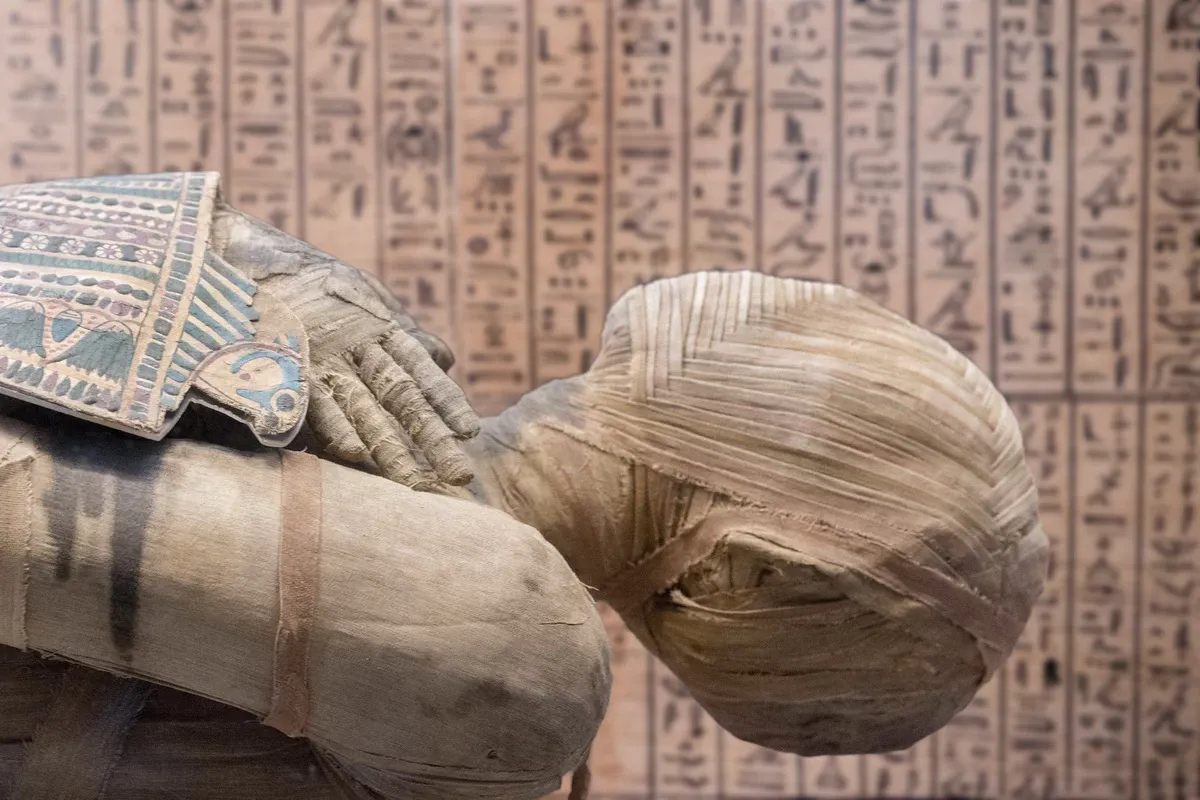
Image source: theconversation.com
5. Breath Mints, Egyptian Style
Back in the glorious days, when the Nile River was the lifeblood of civilization and sheets of papyrus were the go-to stationery, ancient Egyptians showcased their genius in ways beyond mummification and those towering pyramids of ancient Egypt. Ready for a refreshing piece of history? Enter: Egyptian breath mints!
Yup, before we had our plethora of gum and mouthwash, the Egyptians were all about fresh breath. Using frankincense, myrrh, and cinnamon boiled with honey, they concocted a remedy that’s more hipster than today’s artisanal mints. And given how ancient Egypt fun facts can be quirky, this one’s a breath of fresh (ancient) air! Next time you’re on a dinner date, just think how Cleopatra might have prepped for an Antony meet-up. Hint: It wasn’t with Orbit!
6. Flip-Flops Were Fashion
Ancient Egyptians weren’t just about pyramids, mummies, and enigmatic hieroglyphs; they were fashion trendsetters too! Dive into the ancient Egypt fun facts wardrobe and pull out – wait for it – the flip-flops! Yes, the comfy sandals you cherish every summer have ancient roots. Egyptians crafted theirs using the fibers of the papyrus plant, making for a lightweight and eco-friendly footwear choice.
Can you imagine a pharaoh stepping out of his palace, the shining sun reflecting off the Nile River, clad in majestic robes and… rocking a pair of these sandals? Talk about timeless style! Next time you slide into your flip-flops for a beach day, give a nod to their millennia-old lineage. Fashion may change, but comfort? That’s eternal.

Image source: artofcounting.com
7. Party Like An Egyptian
Modern folks: “Let’s grab some beers!” Ancient Egyptians: “Let’s crumble some bread!” Yes, when it came to inventing beer, they truly rose to the occasion. Using partially baked bread, they created a frothy concoction that’s probably the ancient equivalent of a thick stout.
These ancient Egypt fun facts make you appreciate your pints more, right? This drink-food hybrid was so unique that we bet even the most hipster of breweries today would have a tough time replicating it.
8. Board Games Before Xbox
Gamers today might brag about their state-of-the-art setups, but few things beat the OG game night in ancient Egypt. Introducing “Senet”, the game where strategy met spirituality.
This popular pastime was probably the reason why friends in ancient Egypt had the same heated arguments we have today over Monopoly. So, the next time someone says, “Board games? How ancient!”, you can proudly reply, “Exactly! Just like the Egyptians!”.
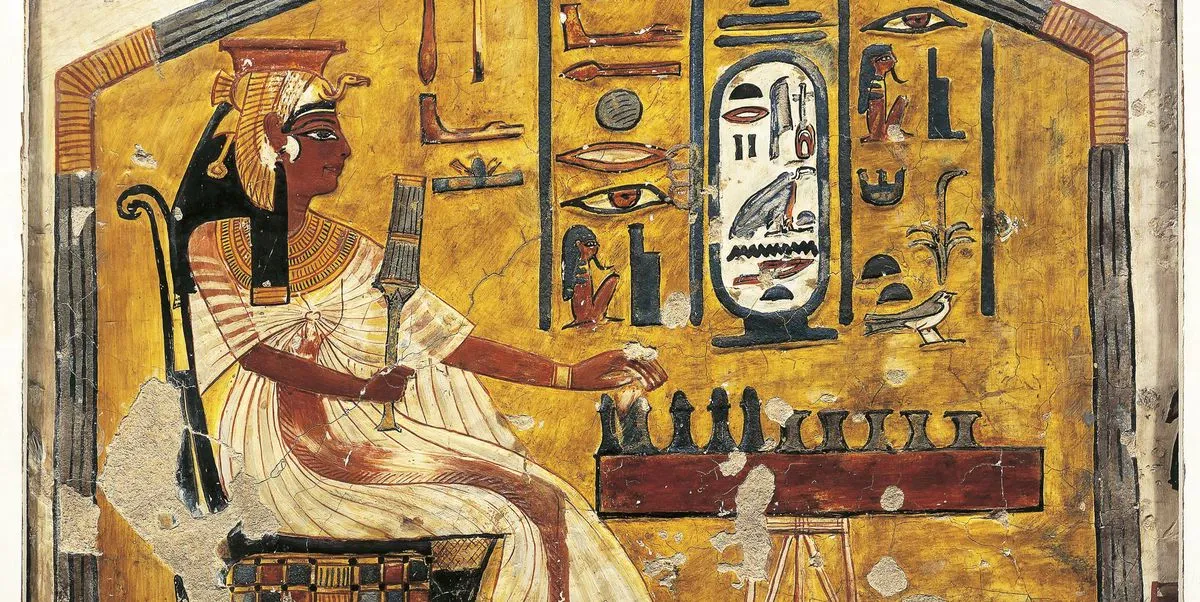
Image source: popularmechanics.com
9. No Papyrus, No Fun
Once upon a time in the land of fun facts about ancient Egypt, the ancient internet was called… papyrus! This tall, reedy plant was their answer to today’s paper and touchscreen combined. The scroll was their tablet, and the hieroglyphs? Well, they were the emojis of their time.
Just imagine – no papyrus would mean no scrawling of love letters with winking Horus eyes or fun doodles of the Sphinx trying out a new set of shades. Even the detailed ‘how to assemble a chariot’ manuals were jotted down on papyrus. Today’s recycling? It’s basically an echo of how Egyptians utilized nature in a sustainable way.
10. Get Inked
Tattoos, today’s quintessential symbols of coolness, rebellious spirit, or significant life events, have their roots deep in time. But how deep? Let’s travel through fun facts about ancient Egypt. The ever-gorgeous women in ancient Egypt were getting inked not just as a style statement but also for therapeutic or protective purposes.
So, the next time you’re at a beach, flashing your modern hieroglyph (aka, tattoo), remember, it’s not just art; it’s millennia-old art! And who knows, maybe Cleopatra had a sneaky little ink hidden somewhere, declaring her love for Caesar?
11. Egyptians Wore Cones of Scented Fat!
In the extensive collection of fun facts about ancient Egypt, this might just be the crowned jewel. Why bother with the spray or roll-on fragrances when you can wear your perfume on your head? Egyptians had an epic hack – cones of scented fat.
As these cones melted under Egypt’s scorching sun, they released fragrances that probably rivaled today’s top brands. Forget Chanel or Dior; it was all about the “Eau de Melted Cone.” Just imagine the scene at an Egyptian party: “Darling, you’re melting divinely tonight!”
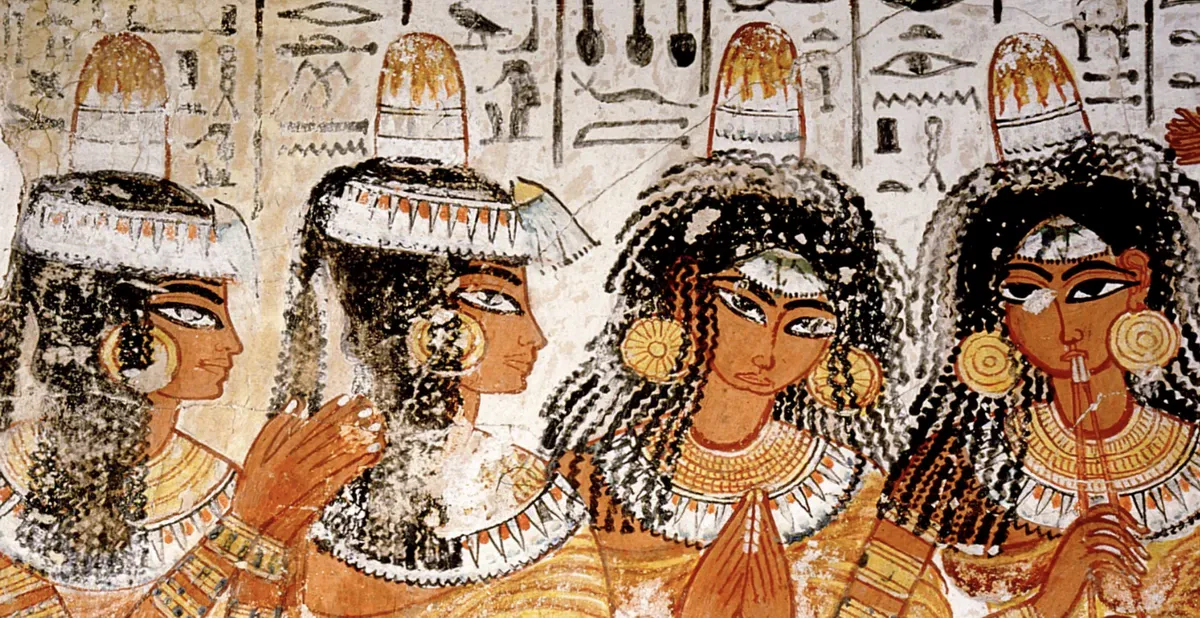
Image source: mrimhotep.org
12. “We Knead Our Bread!” – Ancient Egyptian Workers Strike!
Picture this: ancient Egypt, where building massive tombs was all the rage. But one day, the hardworking artisans of Deir el-Medina, not the Valley of the Kings, put their chisels on pause. Why? Their grain delivery was late! No bread, no work – an ancient motto.
So, in a legendary move, they downed tools and marched to the temples, voicing their belly’s complaints. It’s one of the earliest recorded strikes in history. All that hassle over dough, and not the gold kind! Who knew ancient Egyptians were such trailblazers in workers’ rights?
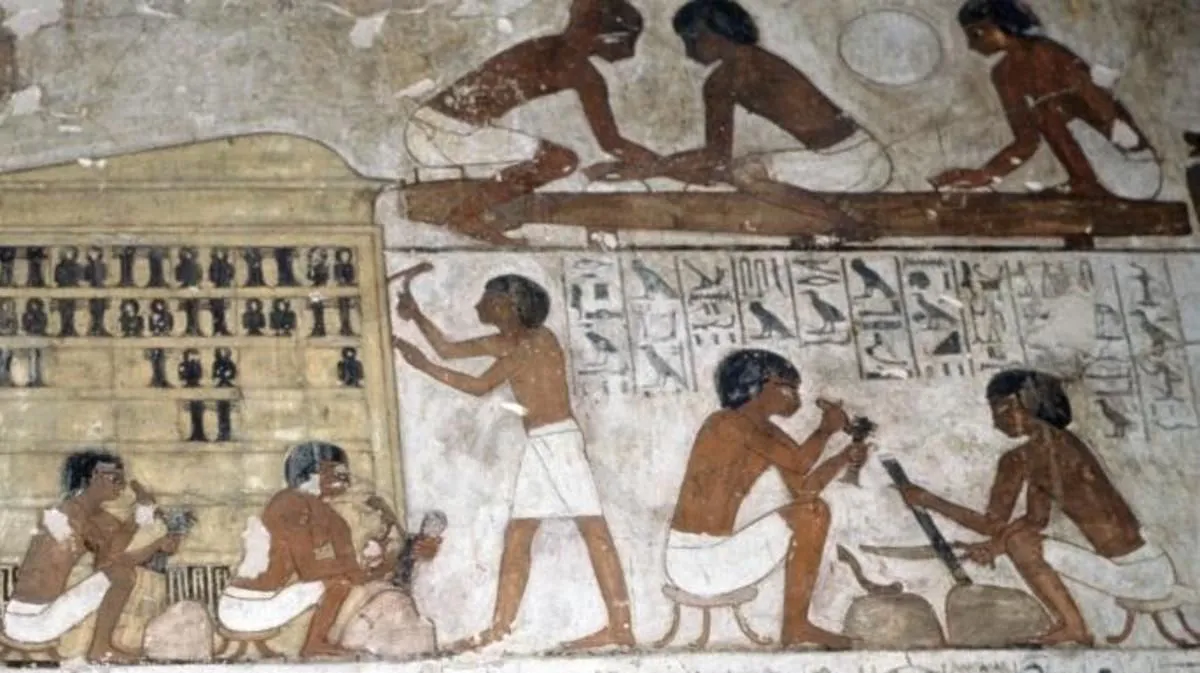
Image source: pinimg.com
13. Rocking the Nile: Music in Ancient Egypt
Music was an integral part of life in ancient Egypt, echoing through its temples, homes, and bustling markets. Unlike today’s pop charts and streaming services, their musical chart-toppers featured instruments like the lyre, harp, tambourines, flutes, and double clarinets.
At its heart, music was deeply spiritual. It played a pivotal role in religious rituals and ceremonies. Just picture this: the rhythmic beats of drums and the harmonious tones of a lyre enhancing the sanctity of a temple ceremony. It wasn’t all serious, though. Parties and festivals were amped up with lively music, and dancing was often a spontaneous accompaniment.
One of the more intriguing tidbits? Music was also considered therapeutic. Ancient Egyptians believed that music could heal the soul and body. So, the next time you turn to your favorite playlist after a tough day, just remember – the ancient Egyptians were onto something!
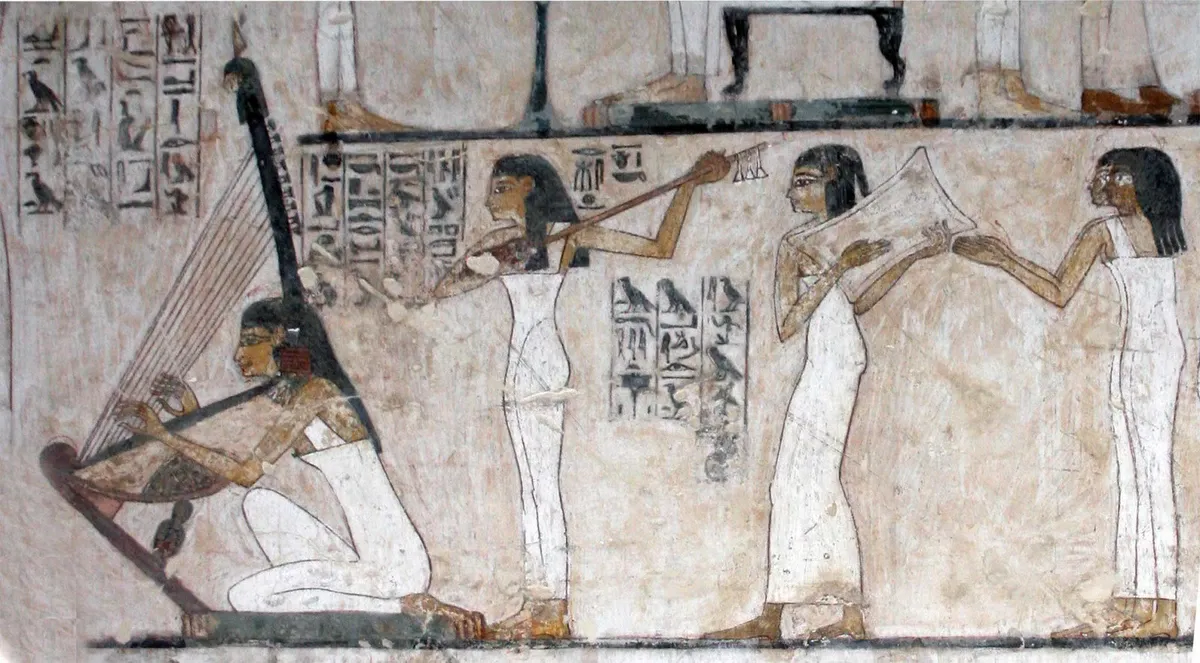
14. The Bug of Rebirth
Among the ancient Egypt fun facts, the significance of the scarab beetle stands out. While mummification in ancient Egypt had its rituals with canopic jars, the scarab beetle symbolized the sun god Ra’s cycle and rebirth.
These beetles, in their daily dung-rolling routine, embodied the morning sun being rolled across the sky. How’s that for elevating a bug’s status? Hatshepsut, one of the prominent women in ancient Egypt, would’ve nodded in agreement to this sacred symbolism!
15. Fashion Statement: Eyeliner
The fashionistas of today could learn a thing or two from the ancient Egyptians. Drifting through the annals of history, mummification in ancient Egypt and the grandeur of the Pyramid of Giza might eclipse everyday practices. Yet, their makeup game, with its dramatic cat eyes, was top-notch!
That eyeliner, rich in lead, served dual roles: fierce fashion and eye protection. The artisans working on canopic jars probably admired the trend from a distance.
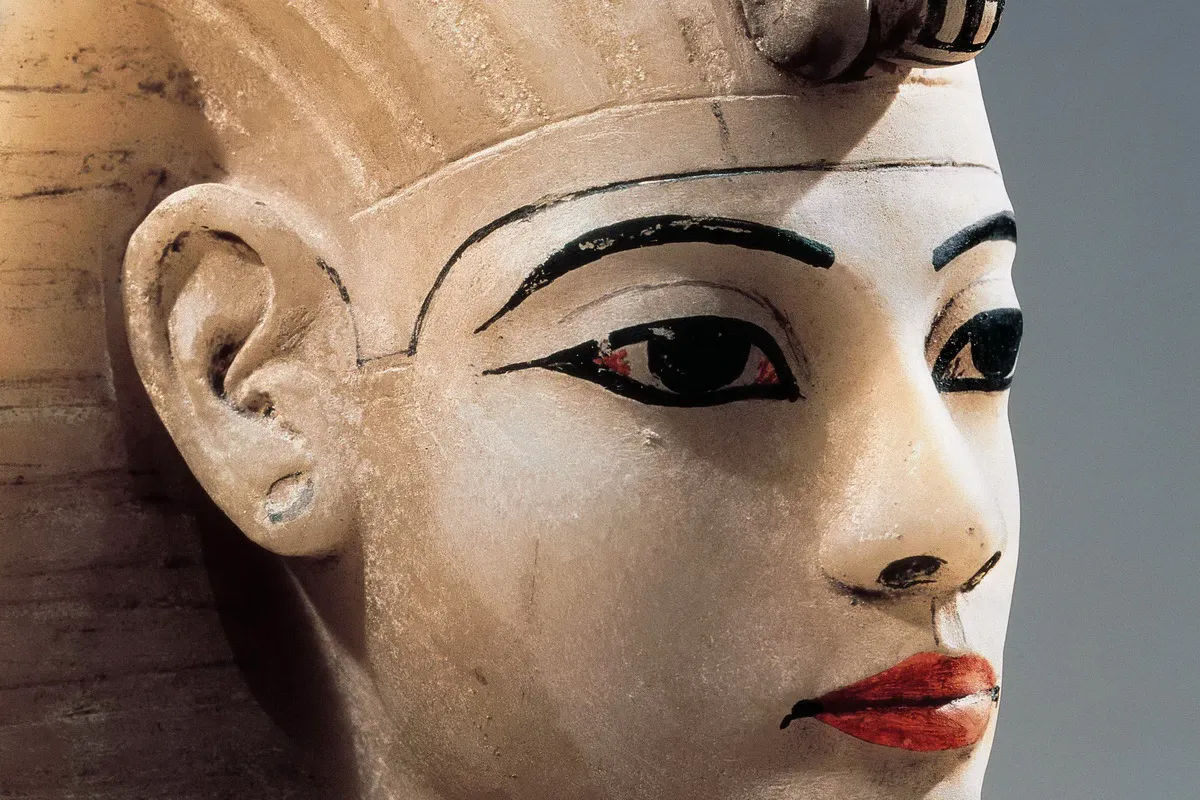
16. Priests and Their “Purr-fect” Morning Routine
Dive into fun facts about ancient Egypt, and here’s a furry tidbit for you! While today’s morning routine might involve a splash of water and some coffee, ancient Egyptian priests had a bit more to deal with.
Every morning, before entering temples, they went through an elaborate purification ritual, which included… wait for it… shaving off all their body hair! And why? They believed it kept them clean and free from lice, which was essential when serving the gods.
But here’s the kicker: these priests also cared for sacred animals, like cats, in the temples. Imagine the irony – a completely hairless priest looking after the sleekest, furriest feline deities!
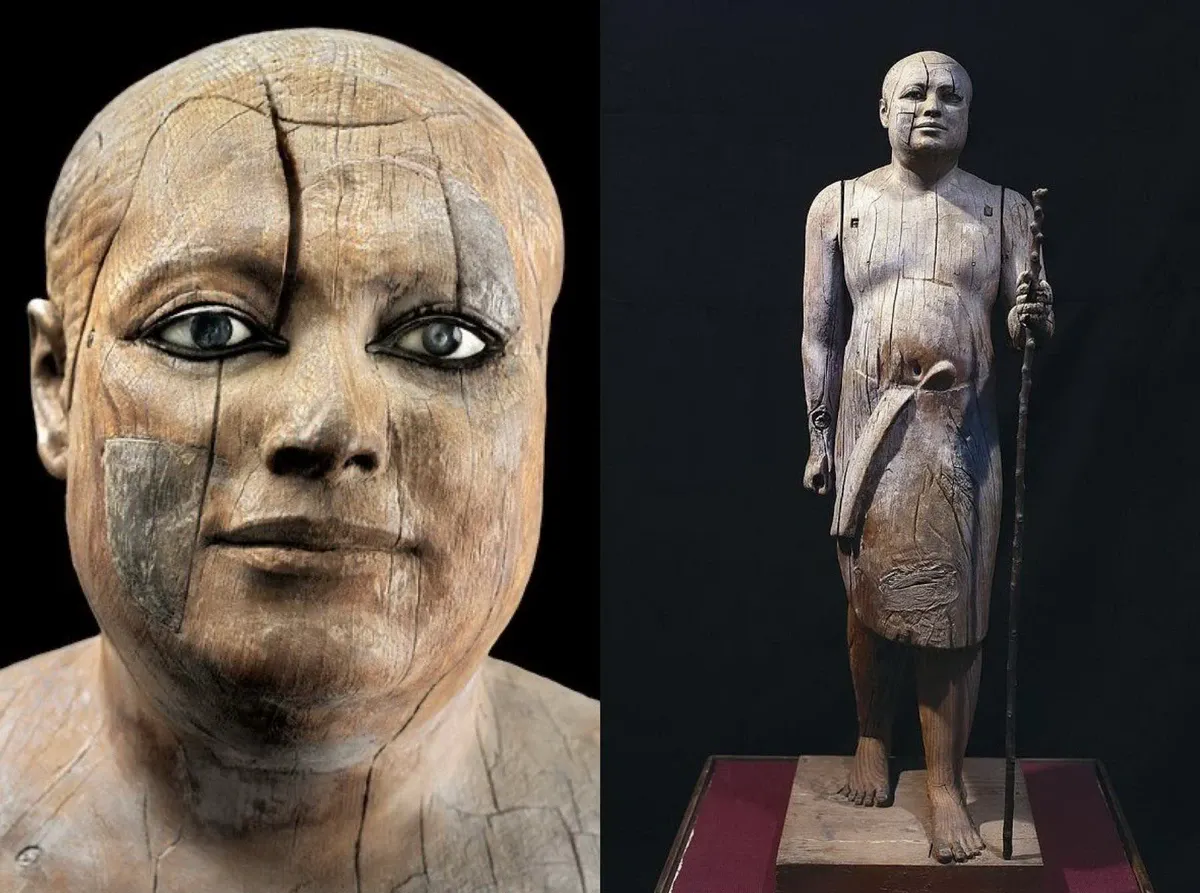
Image source: reddit.com
17. A Towering Achievement in Ancient Egypt
One of the most jaw-dropping fun facts about ancient Egypt is the might of the Great Pyramid of Giza. Standing tall, this ancient marvel retained its title as the tallest man-made structure for a whopping 3,800 years!
Imagine the panorama from the top; the vast Libyan Desert, the life-giving Nile River, and probably a lot of busy Egyptians wondering why someone is up there without an elevator! The sheer architectural genius of the pharaohs and artisans is a testament to ancient Egypt’s grandeur. For a “peak” into the past, take a look!
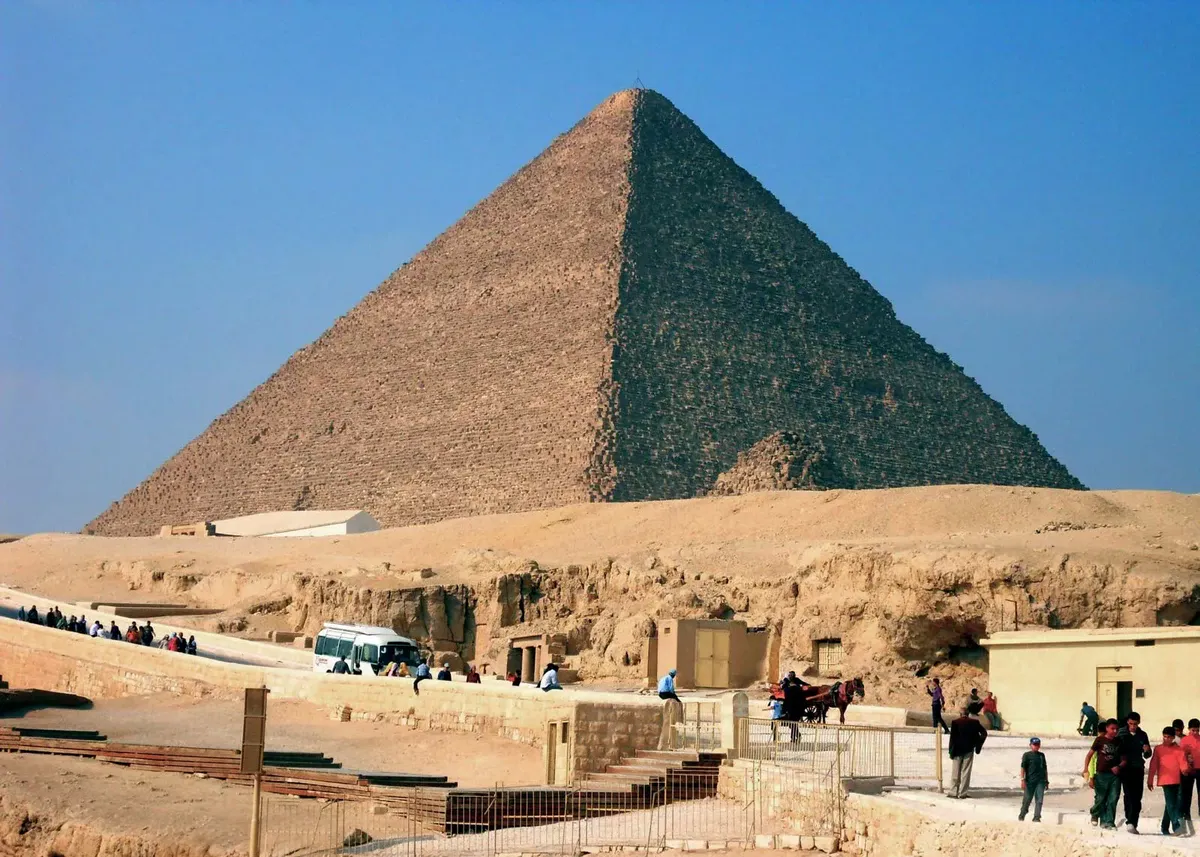
Image source: britannica.com
18. The Dental Drama
Dive into the fascinating world of mummy forensic studies, and you’ll unearth some gritty truths! Many mummies in ancient Egypt have been found sporting cavities and severely worn-out teeth. The culprit? Their bread.
As desert winds blew, sand often mixed with dough, giving a whole new meaning to “crunchy bread”. It’s an interesting fact that makes you appreciate the smooth loaves we enjoy today. Talk about the OG extra crunchy toast!
19. Wigging Out in Ancient Egypt
One of the humorous yet practical solutions of ancient Egypt’s daily life was their combat against the pesky lice. Lice got you itching? Just shave your head bald! But fret not, vanity wasn’t entirely sacrificed.
Wigs, crafted by skilled artisans, became the ultimate accessory. Whether it was for rituals by the Nile River or a stroll near the majestic Karnak Temple, if your real hair didn’t cooperate, you could always flaunt a fabulous wig! An early solution to bad hair days, perhaps?
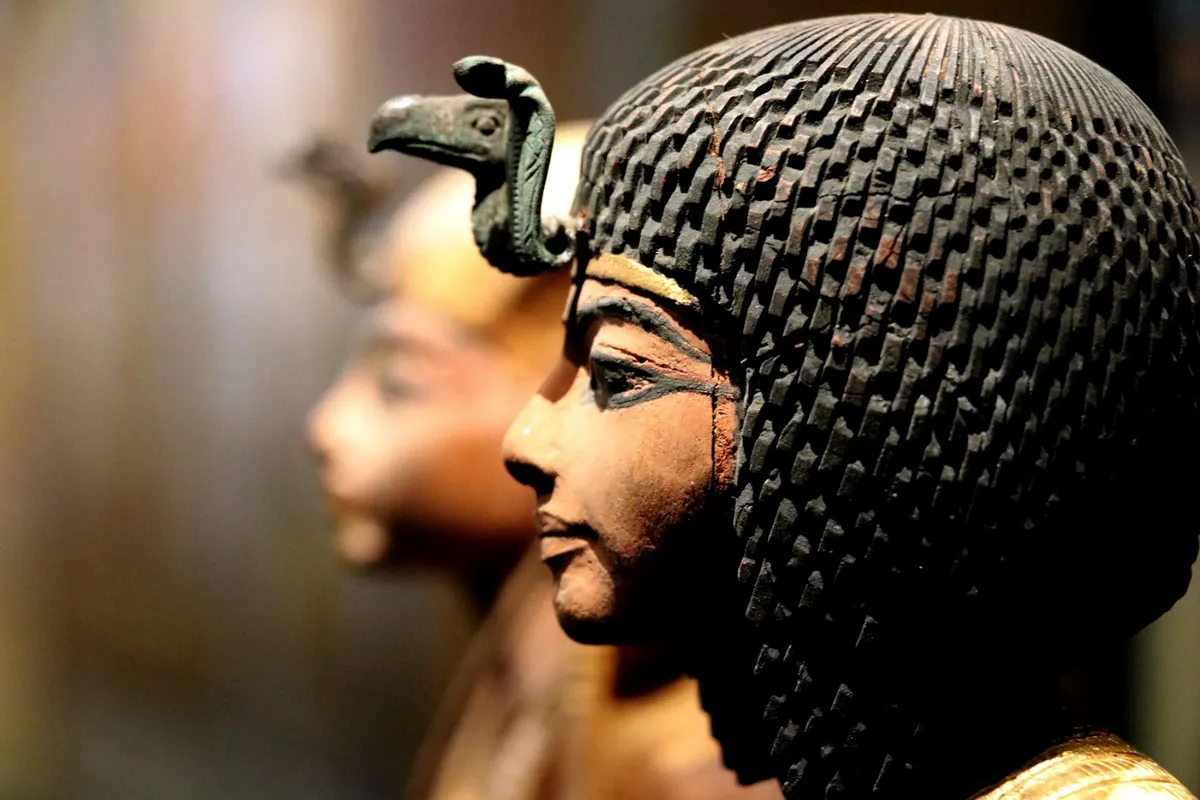
20. Preserve, but Prioritize!
Mummification in ancient Egypt was no easy feat. It was a meticulous process that involved canopic jars to store the organs for the afterlife. But here’s an interesting fact that might raise eyebrows: the brain, which we now know is a vital organ, was often deemed unnecessary.
Instead of getting a fancy jar like the heart or liver, it was casually discarded. Maybe they believed the soul resided in the heart? Either way, it’s a stark reminder of how our understanding evolves!
21. Swinging the Ancient Sickle!
Delving deeper into fun facts about ancient Egypt, let’s talk about a weapon that made enemies think twice. The Khopesh! Soldiers of ancient Egypt were not playing games when they took this out.
This sickle-sword, shaped oddly like a question mark, was not just a fearsome weapon but also a status symbol. Some might even jest it looked like a hazardous yo-yo. Now, imagine a soldier yo-yoing this in battle – terrifying and mesmerizing all at once!

Image source: Wikimedia Commons
22. Pet Preservation: Ancient Egypt Style
“Rover, Whiskers, you’ll be with us forever!” Literally. Mummification wasn’t exclusive to people. Egyptians loved their pets so much that they ensured a journey with them into the afterlife.
Cats, baboons, crocodiles… you name it. If it was sacred or beloved, it got the wrap-and-reserve treatment. It’s one of the fun facts about ancient Egypt that truly shows their compassion.
23. Ancient Protective Gear: The Amulet
Backpacking through ancient Egypt? Don’t forget your amulet! These weren’t just fashion statements; they were spiritual GPS systems.
Designed to safeguard and bestow luck upon the wearer, they were the ancient equivalent of travel insurance. Though, we’re not entirely sure if they’d be helpful with any lost luggage at the Nile River port.
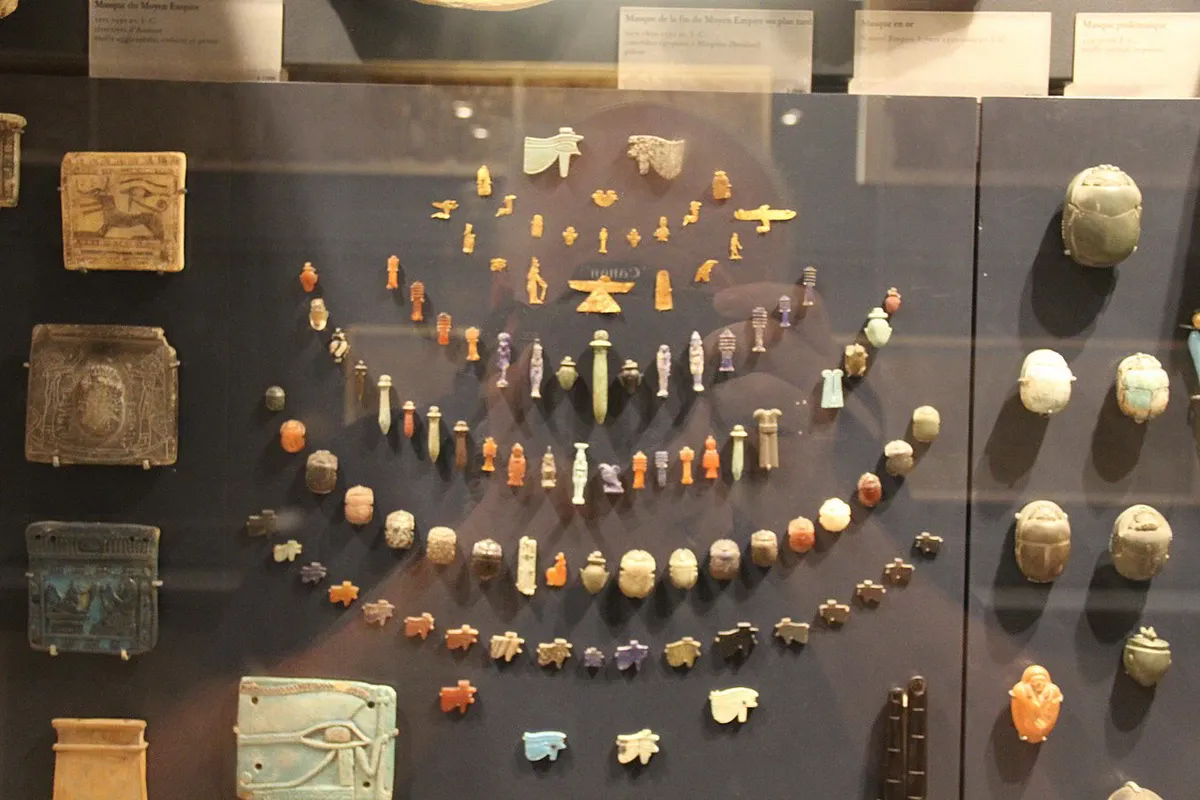
Image source: Wikimedia Commons
24. Queen of Disguise: Hatshepsut
Let’s talk about the boss lady of ancient Egypt – Hatshepsut. Among the few female pharaohs, she was a trailblazer. Not just content with ruling, she took on male attire, including the iconic pharaoh’s fake beard.
Maybe it was a fashion statement, or perhaps a nod to tradition, but she sure knew how to rock facial hair better than most. Gender norms? She laughed in the face of them!
25. Riding the Ancient Waves: Nile River
Among the plethora of interesting facts, here’s a splashy one. The Nile River, winding its way through Egypt, was the epicenter of life, agriculture, and some epic boat cruises. It was like the main highway, the water park, and the grocery store all rolled into one. But what’s even more amazing is its annual flood, graciously called the “Inundation.”
It transformed the land, laying down layers of fertile silt and setting the stage for a crop bonanza. Can you imagine waiting for a river to redecorate your backyard every year? Also, “Inundation” definitely sounds like it would have been the title of an ancient Egypt blockbuster – featuring dramatic flood scenes, heroic farmers, and maybe a crocodile or two.
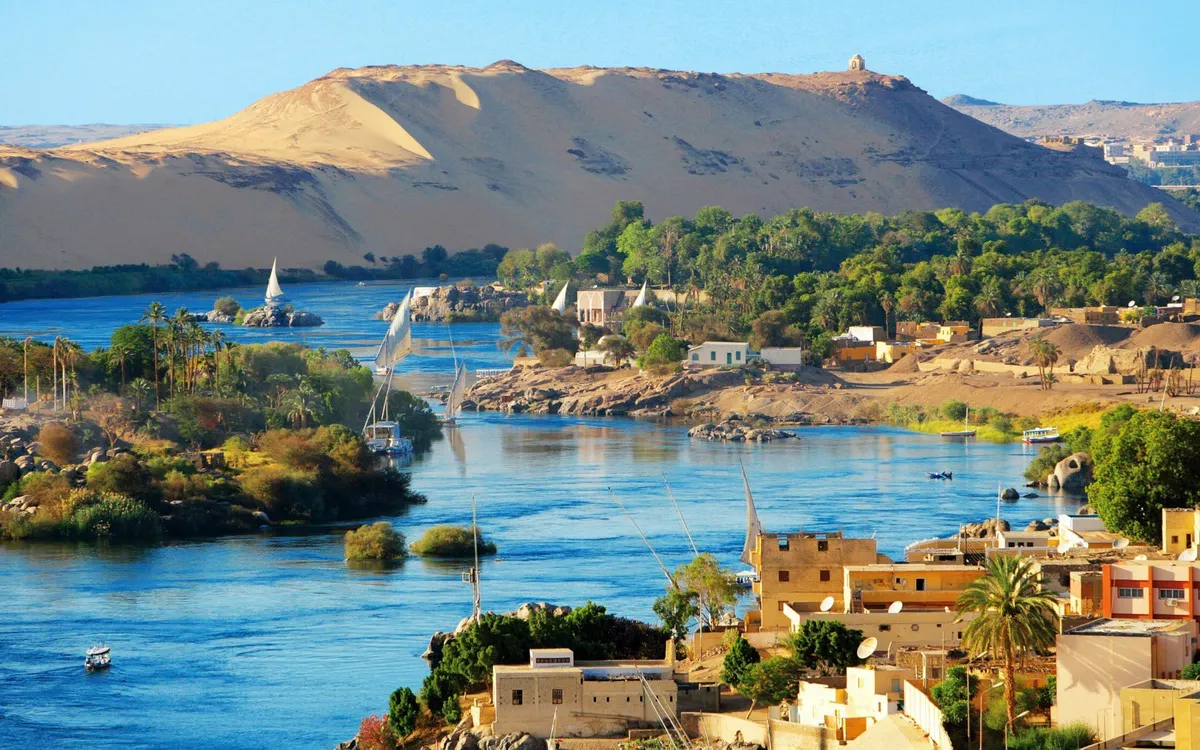
Image source: journeytoegypt.com
26. Bedtime in Pharaoh’s Chamber: A Solid Rest
One of the fun facts about ancient Egypt that may leave modern folks scratching their heads is the pharaoh’s choice of pillows. No fluffy down or memory foam here! Instead, imagine resting your weary head on a wooden or stone headrest.
At first, it seems like a recipe for a stiff neck, but these headrests were intricately designed to provide optimum support. And hey, no more worrying about drool stains or pillow fluff! It’s high fashion meets ancient chiropractics. Would you trade your soft pillow for a shot at pharaonic chic.
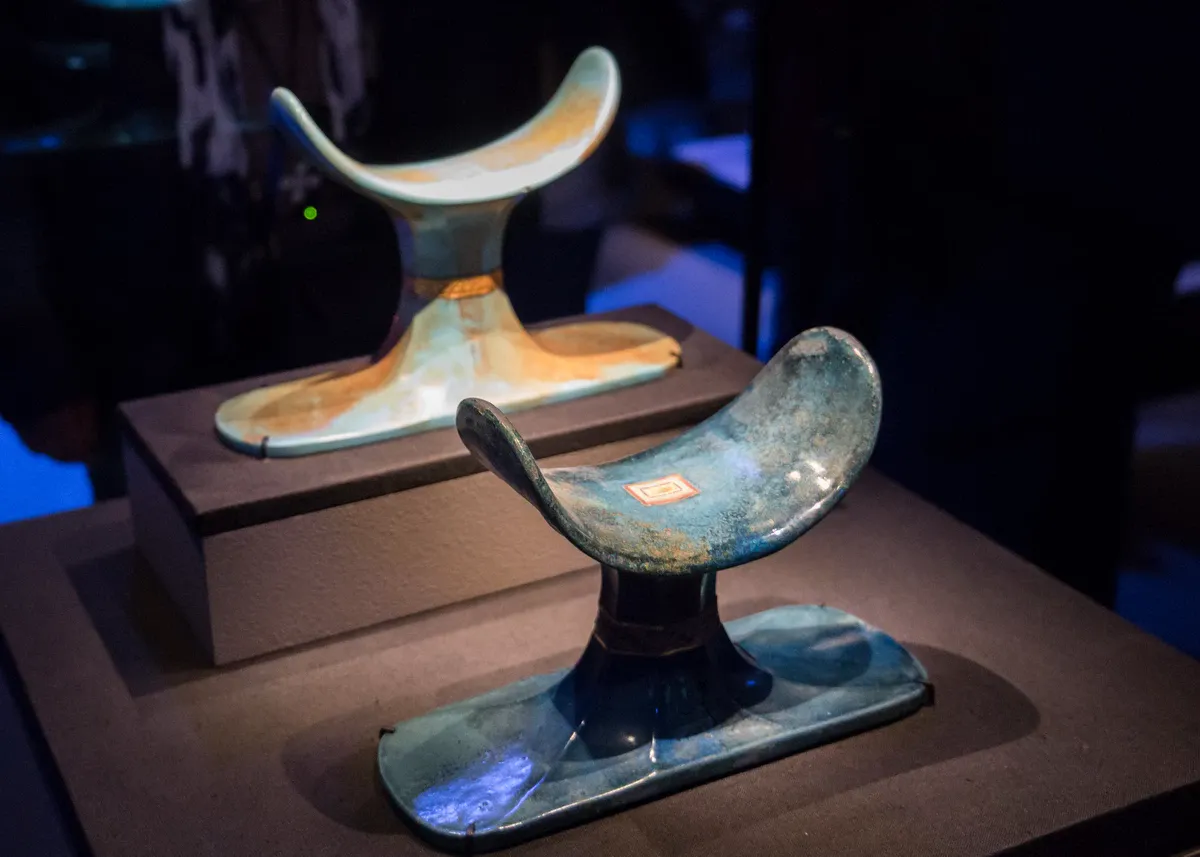
Ancient Egyptian headrest. Image source: obonparis.com
27. Hathor’s Hungry Rampage
Venturing further into ancient Egypt fun facts, Hathor’s tale stands out. A goddess known for love and beauty, Hathor wasn’t always the gentle type. Once slighted, she’d transform into Sekhmet, a fierce lioness with a taste for… well, humans.
The lesson here? Never upset a goddess. Especially one who moonlights as a man-eating lioness. It’s like the ultimate cautionary tale for anyone thinking of skipping Valentine’s Day.
28. Karnak Temple: Ancient Egypt’s Party Venue
Roll out the red carpet, or maybe the golden sands, because we’re about to step into the Karnak Temple! Among the grandeur and mystique that ancient Egypt fun facts boast, the Karnak Temple stands tall. Not just any religious site, this was the largest of its kind, spanning a whopping 200 acres. That’s right! It could make a modern football stadium look like a sandbox.
Priests back then probably lost their breath just getting from one end to the other. Imagine the processions, ceremonies, and the sheer magnificence of it all. Hosting a divine shindig? Karnak Temple was the place to be! The pharaohs definitely knew how to build big.
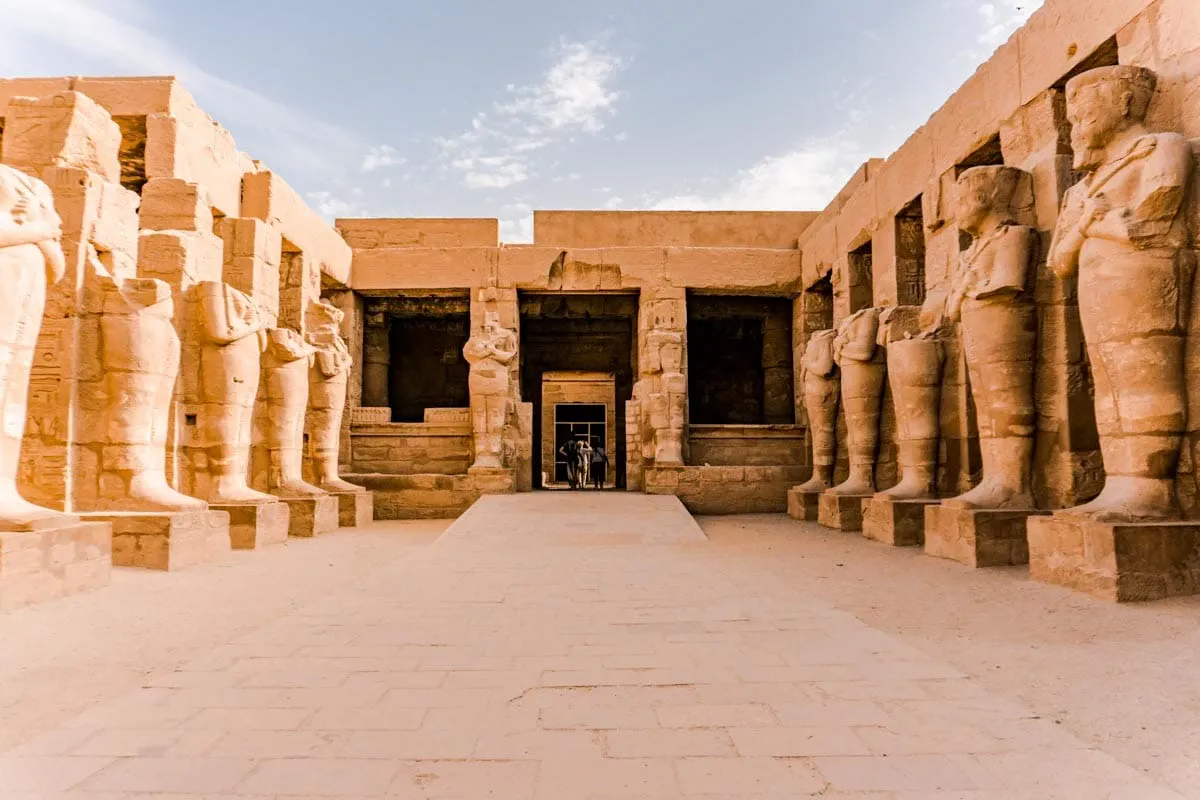
Image source: thediscoveriesof.com
29. Seeking Wisdom? Ask a Bird!
Bird-watching in ancient Egypt was not just a pastime, it was a dive into wisdom. The elegant Ibis bird was not just another pretty face in the avian crowd. It was associated with Thoth, the revered god of wisdom and writing.
That’s right, while we’re trying to understand cryptic tweets online, the ancient Egyptians looked to actual birds for deep knowledge. Makes you think twice about that bird you saw in the park this morning, huh? Maybe it’s time to ditch the modern self-help books and have a heart-to-heart with a feathered friend. Who knew ornithology could be so philosophical?
30. Ancient Egyptian Geography Goof-Up
Wrapping up our journey through fun facts about ancient Egypt, here’s a quirky one about their sense of geography. The Egyptians had a term, “Ta-Mery,” translating to “Beloved Land.” They were, of course, referring to their own sprawling landscapes along the Nile. But, funny enough, they didn’t have a singular term to represent the entire vast continent of Africa.
Imagine the head-scratching moment when someone asked, “So, what’s beyond our beloved land?” Oops! Modern geography students can take heart; even ancient civilizations had their “Wait, what?” moments!
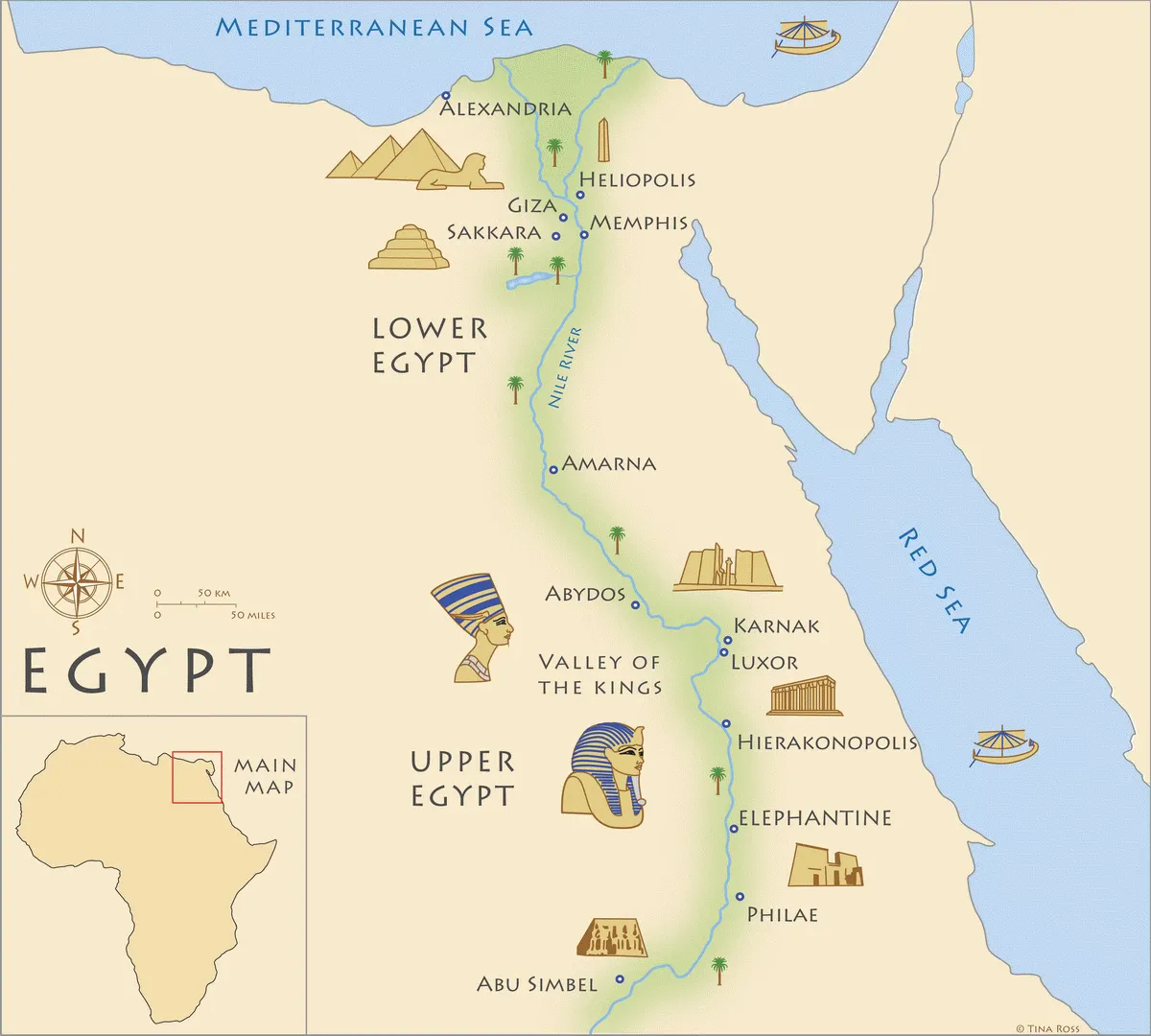
Image source: worldhistory.org
FAQ
What are 10 interesting Facts about ancient Egypt?
- The Great Pyramid of Giza was the tallest man-made structure for over 3,800 years.
- Ancient Egyptians mummified not only humans but also their pets and sacred animals.
- The Egyptian hieroglyphic script has over 700 symbols.
- Ancient Egyptians wore cones of scented fat on their heads that would melt over the day, releasing fragrance.
- The earliest known peace treaty was between the Egyptians and Hittites.
- The Nile River, essential for Egyptian civilization, flooded annually, replenishing the soil.
- Cleopatra was not Egyptian by birth; she was of Greek descent.
- The game Senet, played in ancient Egypt, is one of the world’s oldest known board games.
- Ancient Egyptians believed in an afterlife, and the Book of the Dead was a guide for the journey to the afterlife.
- Pharaohs often wore fake beards, a symbol of authority, even the female Pharaoh Hatshepsut.
What are 3 fun Facts about Egypt for kids?
- Mummies are not wrapped in simple bandages; they were carefully wrapped with linen strips, with some having amulets tucked in for protection!
- The ancient Egyptian calendar had 360 days, just ten days short of our current calendar.
- Cats were so revered in ancient Egypt that harming one, even accidentally, could result in severe penalties.
What was ancient Egypt famous for?
Ancient Egypt was famous for its impressive architecture like pyramids and temples, its pharaohs, the Nile River, hieroglyphics, mummies, and its influential mythology and pantheon of gods.
What did ancient Egypt invent?
Ancient Egyptians are credited with many inventions including paper (papyrus), the calendar, the ox-drawn plow, black ink, complex medical procedures, and even toothpaste!
What was the most important in ancient Egypt?
The Nile River was the most critical element in ancient Egypt. Its annual flooding brought life to the region, providing water, transportation, and fertile soil for agriculture.
Who were 3 important people in ancient Egypt?
- Ramesses II: One of Egypt’s most powerful and celebrated pharaohs who reigned for 66 years.
- Imhotep: An architect, priest, scribe, and physician, he’s credited with designing the Step Pyramid at Saqqara.
- Queen Hatshepsut: One of the few female pharaohs, known for her peaceful reign and significant building projects.
Who built the pyramids?
The pyramids were built by a workforce of skilled laborers and architects, often well-treated and well-fed. Contrary to some beliefs, they were not built by slaves.
Who were the 5 black pharaohs?
The term “Black Pharaohs” typically refers to the rulers of the 25th Dynasty of Egypt, originating from Kush in Nubia. Five prominent kings from this dynasty include Piye, Taharqa, Shebitku, Shabaka, and Tantamani.
How many gods did Egypt have?
Ancient Egypt had a vast pantheon of gods, with over 2,000 deities, each overseeing various aspects of life, nature, and cosmic principles.
How did ancient Egypt fall?
Ancient Egypt experienced several periods of decline, with the final fall happening in 30 BC when it became a Roman province after Queen Cleopatra VII’s reign ended. Over centuries, it faced invasions from the Assyrians, Persians, and finally the Greeks under Alexander the Great, before coming under Roman rule. Each invasion and internal strife contributed to its eventual decline.






